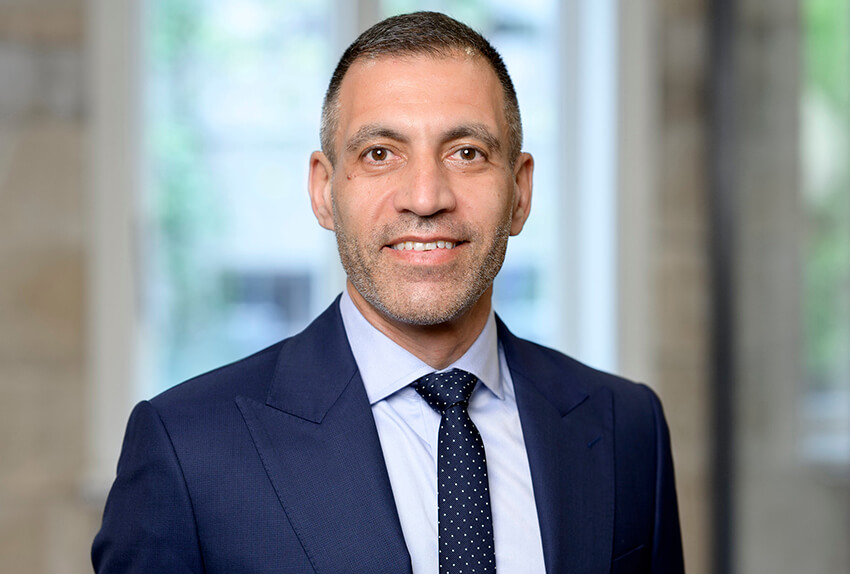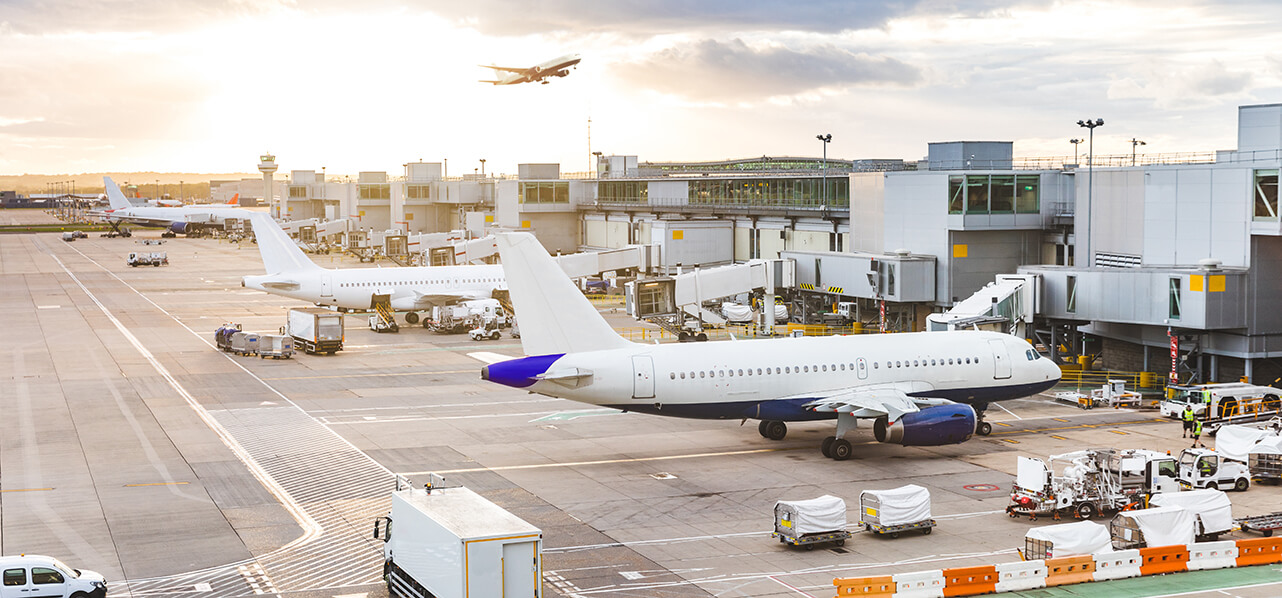Partner Sydney
"ESG issues and concerns play an increasingly direct and critical role in all aspects of the operations and business of aircraft lessors."
| TERMS AND CONCEPTS | |
|---|---|
| A Aviation Working Group Carbon Calculator | As the aviation industry progresses towards a greater level of reporting to stakeholders and regulatory bodies on ESG matters and the potential for Sustainability-Linked Financing ("SLF") continues to develop, lessors may need to provide data on carbon dioxide emissions for aircraft and aircraft portfolios. Watson Farley & Williams ("WFW") advised the Aviation Working Group (“AWG”) on the building and implementation of the AWG carbon calculator ("ACC"). The ACC uses original equipment manufacturer source data provided by Airbus, ATR, Boeing and Embraer to generate and compare CO₂ emissions data for aircraft and aircraft portfolios. The source data is determined by, and provided for, operational aircraft models under consistent standards, assumptions and methodology, ensuring that it is both accurate and directly comparable. The ACC data can be used and exported to help lessors report on the carbon dioxide emissions of their fleets and evidence compliance in SLF. |
| E Emissions Trading Schemes | With continued enforcement around existing emissions schemes, such as the European Union's ("EU") Emissions Trading System (the "EU ETS"), and the implementation of more international schemes, such as the Carbon Offsetting and Reduction Scheme for International Aviation ("CORSIA") which entered its voluntary 'First Phase' this year, the importance and impact of emission-related schemes grows. These schemes force airlines to offset the amount of CO₂ emissions that cannot be reduced by way of technological or operational improvements. This theoretically incentivises airlines to reduce their emissions, in turn increasing the demand for more fuel-efficient and environmentally friendly aircraft and placing a greater burden on demand from lessors. As regulations become stricter, lessors must prioritise investing in next-generation aircraft with lower emissions profiles. This will help ensure their fleets remain attractive to airlines that are increasingly bound by such carbon offsetting programmes. Lessors should also be aware of the potential need to monitor their lessees' ongoing compliance with these schemes. Not because of the undue fears around some of these schemes of costs being passed onto lessors (see our article here), but because the accrual of such unpaid regulatory charges can serve as an early indicator of a lessee's financial difficulties. Overall, regulations and schemes such as EU ETS and CORSIA are crucial to lessors, as their enforcement impacts the value and marketability of older aircraft. |
| E eVTOL | The future landscape for electric vertical take-off and landing (“eVTOL”) aircraft remains somewhat uncertain as the market for electric aircraft continues to develop. Although certification of a number of manufacturers' eVTOL aircraft is expected to arrive in the in coming years, the development of new infrastructure for eVTOLs has not kept pace with manufacturers. Additionally, there are concerns about the viability of electric aircraft considering their lower passenger capacity and shorter range given the capability of the batteries powering them. Nonetheless, there has been a notable development in that eVTOL developer AutoFlight made the first delivery of a civilian ton-class eVTOL aircraft in Japan this year. Certain lessors have invested directly in eVTOL, such as Avolon placing an order for 500 of Vertical’s VX4 aircraft back in 2022, and there continues to be scope and interest for lessors to explore opportunities and investment in this space (whether through eVTOL or larger alternatives such as CTOL). |
| F Fleet Renewal | Whilst long-term goals and strategies around net zero and investing in sustainable technology and alternative energy sources prevail in the industry, one of the shorter-term activities that contributes towards decarbonisation is fleet renewal. In their Waypoint 2050 report, the Air Transport Action Group state that today's new generation aircraft are providing immediate 20-25% fuel and CO₂ savings in comparison to their predecessors. Newer technology and more fuel-efficient aircraft will likely grow in importance for lessors, serving as attractive prospects for a customer base increasingly turning to newer technology in the short term to help meet ESG-related targets and lower the costs associated with older aircraft. Thus, many lessors are turning towards ensuring that the majority of their fleets are comprised of fuel-efficient new technology aircraft, often setting publicly stated targets to ensure this is achieved in the next few years. |
| G Greenwashing | With several EU regulatory frameworks, such as the EU CSRD (explored further below), prompting a greater standard and level of reporting on ESG, the potential for greenwashing (i.e. making misleading or false statements about the environmental impact of operations or practice) should be a notable consideration for lessors when implementing and reporting on their ESG strategies and targets. Lessors will need to ensure that a balance is struck between ambitious targets and statements on ESG and ensuring these remain realistic and reflective of actual impact. This is particularly important given that the aviation sector is considered to be a polluting industry and, as such, typically garners a greater level of scrutiny. The UK Advertising Standards Authority has ruled against advertisements which made various statements about their environmental impact by Lufthansa, Air France-KLM, and Etihad in 2023 and Virgin Atlantic in 2024, for being misleading or lacking crucial information. Although these actions were taken against airlines, it is indicative of regulatory bodies' increasing willingness to crack down on greenwashing. Overall, lessors must take care to substantiate any ESG statements or claims they make and be prepared for the possibility of penalties and negative publicity should they fail to stand up to scrutiny. |
| H Hydrogen Propulsion | Whilst there is much discussion around the implementation of SAF in the industry (see below), a long-term consideration presents itself in the form of hydrogen-powered aircraft. Manufacturers are investing in exploring hydrogen technology. Airbus' ZEROe programme aims to put the first hydrogen-propulsion aircraft into service by 2035. Notably, the programme reached significant milestones in 2023 with its first successful test of the hydrogen fuel cell system running at 1.2 MW in June, as well as the iron pod, a hydrogen-propulsion system for Airbus' electric concept aircraft, being powered with hydrogen fuel cells for the first time at the end of the same year. It should be noted that manufacturers are not the only ones investing in this space. In 2021, the Aerospace Technology Institute developed FlyZero, a UK government-backed research project, which developed concept aircraft to put hydrogen propulsion on a competitive base with SAF-powered aircraft. There are also opportunities for lessor investment here too, as evidenced by Airbus' partnership with Avolon, who have joined the ZEROe programme with a view to studying the potential of hydrogen-powered aircraft and how they can be financed and commercialised. However, Boeing Chief Technology Officer Todd Citron has highlighted potential safety challenges to overcome when using hydrogen, such as the higher flammability of hydrogen fuel compared to traditional fuels. Additionally, from a technological perspective, hydrogen holds less energy by volume than traditional fossil fuels thus requiring greater amounts to reach the same flight range. Despite the challenges, manufacturers seem committed to developing hydrogen propulsion as an avenue for the future of environmentally conscious travel. |
| L Lease Terms | As lessors become more focussed on ensuring compliance with sustainability targets within their fleet and monitoring airlines' compliance with regulations such as the EU ETS scheme, questions may be raised as to how best this should be dealt with in leasing arrangements. From a drafting perspective, lessors should ensure that, as standard, lessees should be obliged to authorise lessors to contact the appropriate regulatory bodies to monitor a lessee's ongoing compliance with these regulations and schemes. In addition, rather than relying on general language with respect to compliance with applicable laws, lessors should consider the inclusion of express obligations on their lessees to comply with obligations under upcoming regimes, such as CORSIA. Despite CORSIA still being in its voluntary stages, the typical term of new leases means that many airlines will fall within the mandatory scope of the scheme during the term of a lease. Finally, depending on the age of the aircraft, the capability of the lessee, and the overall use of an aircraft within a lessor's portfolio, lessors may wish to consider building in sustainability-linked terms and obligations in their lease agreements. This may be of particular concern if, for example, an aircraft is being considered for the purpose of an SLF portfolio. |
| L Leasing Rates | As pressure mounts on lessors to increase sustainable practices and investments and develop ESG initiatives and strategies, ESG may become more prominent when determining the leasing rates they offer airlines. Whether in connection with SLF or more generally to ensure their fleets are used in a sustainable manner, lessors may seek to offer preferable leasing rates to airlines that perform better when considering ESG metrics. This would also have the added benefit of lessors being able to influence airlines to engage in a greater level of sustainability reporting. However, considering the ongoing delivery delays by leading manufacturers and potential difficulties faced by airlines in meeting ESG-based targets, it may be difficult for lessors to demand such competition around leasing rates at this stage. |
| N Net Zero | The aviation industry has set a target to achieve net zero emissions by 2050, with IATA members committing to this target in 2021 and the International Civil Aviation Organization, the UN agency governing civil aviation worldwide, agreeing to the same in 2022. There is huge focus from governments, quasi-governments and industry bodies on achieving this target. This is evidenced by the EU's 'Fit for 55' initiative, whereby it aims for Europe to be the first climate-neutral continent by 2050 and reduce greenhouse gas emissions by at least 55% by 2030 (compared to 1990 levels), with all EU laws are being reviewed to achieve these targets. There are effectively four key areas of development for aviation to hit net zero by 2050: better aircraft and engine technology; a focus on sustainable aviation fuel; improved air traffic management and aircraft operations; and economic measures such as carbon offsetting programmes. Achieving net zero by 2050 in the aviation industry is challenging, but efforts will be expected from lessors to help reach this goal through a combination of increased investment, new technology and infrastructure efficiency improvements. Lessors should also ensure that their focus is not solely on long-term goals, but also on greener assets and the latest technology in the short-term to help the overall transition towards net zero. |
| O Objectives | Aircraft Leasing Ireland Sustainability Charter In October 2022, Aircraft Leasing Ireland launched its Sustainability Charter. The charter establishes a framework of ESG fundamentals for the aviation industry by highlighting ten principles across each limb of ESG, covering climate action, technology, industry leadership and employee wellbeing. Now signed by over 30 leasing companies, the charter can help lessors kickstart their understanding of the ESG landscape and what principles sit at the forefront of stakeholders' minds when developing their ESG strategies. UN's Sustainability Development Goals ("SDG") The UN's SDG are a set of 17 global objectives adopted in 2015 by all UN members as part of the 2030 Agenda for Sustainable Development. The SDG seek to address a wide range of social, economic and environmental challenges. Alignment with these international objectives is expected of lessors operating in the aviation industry today who are expected to integrate these goals with their operations. For example, compliance with emissions regulations is linked with SDG 12 (ensuring sustainable consumption and production patterns) and SDG 13 (taking urgent action to combat climate change and its impacts). Alignment with the SDGs will help lessors strengthen their ethical position and image and ensure the long-term viability of their business in a world rapidly transitioning towards sustainability |
| R Reporting | Whilst many lessors are voluntarily preparing and publishing annual ESG and sustainability reports, they should nonetheless remain aware of regulatory reporting requirements. Under the EU Corporate Sustainability Reporting Directive ("EU CSRD"), if a lessor is a large company, a listed entity or otherwise deemed significant in terms of its societal and environmental impact, it will be expected to comply with certain reporting requirements. These touch upon a range of ESG-focussed topics, including climate change and pollution, workers' rights and broader business conduct. Having officially entered into force on 5 January 2023, the EU CSRD is effective from 1 January 2024 for large European listed and public-interest companies and 1 January 2025 for all other large companies. The U.S. Securities and Exchange Commission's ("SEC") climate disclosure requirements for public companies were adopted in March 2024 and require publicly listed companies to disclose climate change-related information in their SEC filings going forward. Such information will include the disclosure of the lessors' activities to mitigate climate-related risk, any climate-related target or goal impact its business and details of its board's level of oversight of climate-related risks. The many lessors who already produce annual reports on ESG and sustainability are well placed to report under the EU CSRD and SEC disclosure requirements. Lessors should nevertheless be prepared to seek out the input of their many stakeholders to fulfil these reporting obligations. The EU CSRD and SEC reporting requirements represent only a small portion of those that may arise in connection with ESG. The EU taxonomy, which is the EU's clarification system as to what economic activities are aligned with a net zero trajectory by 2050 and other environmental goals, is incredibly broad and feeds into all EU legislation covering reporting (as well as capital adequacy and taxation requirements). Lessors will need to be aware of further potential changes in this area on an ongoing basis. |
| S Sustainability-Linked Financing ("SLF") | SLF is indicative of the global finance industry's recognition of its role in assisting the aviation sector with reaching its net zero targets. SLF is effective because it rewards borrowers through beneficial pricing for achieving ESG targets – usually measured through periodic key performance indicators ("KPIs"). SLF has been utilised more frequently by airlines generally in the sector, with more first-of-a-kind deals developing in this space (such as the insurance-backed sustainability-linked JOLCO financing in 2023). However, lessors are becoming more prevalent in this space, with each of China Aircraft Leasing Group, SMBC Aviation Capital and CDB Aviation (to name a few) securing SLF in 2023. Clearly, the benefit of SLF is not just available to airlines and can be utilised by lessors. Those lessors whose overall strategies already closely align with ESG principles may find SLF a suitable way of utilising newer technology aircraft and building upon their relationships with airlines who are already making strides in the ESG space. The drive around SLF will be impacted by legislation falling within the EU taxonomy that drives capital adequacy requirements. For example, the Capital Requirements Directive IV already provides the European Banking Agency with the right to adjust capital adequacy requirements by reference to the position under the EU taxonomy. Further, it is anticipated that changes to will be made to the EU's tax regimes in light of ESG targets. As such, any shift in capital adequacy requirements and tax laws will have a knock-on effect on the viability of SLF for both banks and lessors. Overall, there is somewhat limited public disclosure with SLF and, as such, trends around typical KPIs prove difficult to track. Nonetheless, when procuring SLF, lessors should be cognisant of calibrating these carefully with financiers. If KPIs are made too easy to achieve, they may prompt accusations of greenwashing and if they are made too difficult to reach, they may be more easily abandoned than achieved (thereby undercutting the effectiveness of such financing structure). |
| S Sustainable Aviation Fuels ("SAF") | Pressure within the industry for SAF to be widely adopted is growing. Legally binding SAF requirements have been announced by the EU, Indonesia and Brazil. Following their example, in April 2024, the UK's Department for Transport announced the UK SAF mandate, which sets targets around the percentage of total jet fuel supplied in the UK that must be SAF produced using the 'power-to-liquid' method; the amount of SAF that may be produced from hydroprocessed esters and fatty acids and the amount of SAF supplied in the UK in proportion to total jet fuel supply (notably, 10% of all jet fuel supplied must be SAF by 2030, rising to 22% in 2040). On an even broader scale, the EU's ReFuelEU aviation initiative seeks, amongst other things, to mandate fuel suppliers such that all fuel provided to airlines in EU airports contains a minimum percentage of SAF from 2025 – starting at 2% and eventually rising to 70% by 2050. Faced with a smaller capacity for production and higher costs in comparison to traditional fuel, there is currently insufficient SAF to meet global demand. Where airlines have disclosed data publicly, SAF usage often comprises less than 1% of their total fuel use. Overall, SAF is estimated to account for 0.1% of all aviation fuels used and predictions suggest that, based on current production levels, these targets will be difficult to meet (particularly when consideration is given to the large potential costs for airlines in incorporating SAF into their business generally). Currently there is a lot of focus on particular airlines entering into arrangements with producers to produce specific SAF only for them. With more co-ordination across the industry, there could be better opportunities for SAF to be developed on a larger scale. Looking ahead, more will need to be done in the industry, including government support, to build the requisite infrastructure to increase SAF production and investment. Lessors are already getting involved with SAF in a variety of ways, such as partnering up to conduct feasibility studies on SAF or considering specific investment in SAF-related projects. Ultimately, at a minimum, lessors need to be aware of overarching SAF targets given its impact on their customer base. They should also be aware of the industry-wide investment and development opportunities that could help upscale SAF development in the long-term. We are already seeing more activity in this space with the co-investment by Airbus, Air France-KLM Group, Associated Energy Group, LLC, BNP Paribas, Burnham Sterling, Mitsubishi HC Capital Inc. and Qantas Airways Limited in a SAF financing fund. Importantly, when it comes to defining SAF, there are three principal standards in operation. The EU defines SAF under the ReFuelEU regulation, whilst the US have their own renewable fuel standard; and CORSIA also has set its own definition. The difference between these standards is not minimal. For example, the US definition is much wider than the EU’s and is more focussed on bio-based fuels (which derive from food crops to take advantage of US cornfields), whereas the EU focusses on advanced biofuels and synthetic fuels (which does not involve the use of food biomass). The competing standards with respect to SAF pose problems for their development and lessors will need to have a clear understanding of which standard applies to any SAF related projects in which they are involved. For further discussions on the regulatory framework around SAF, the analysis of the SAF market in Europe and more, you can catch up on our SAF livestream discussion hosted by WFW and KGAL in July. |
| T Targets | Numerous stakeholders in the aviation industry have publicly announced ESG-related goals, with many airlines committing to SAF comprising a specific percentage of their total fuel usage (usually around 10%) by 2030 and both airlines and lessors pushing towards packing their fleets with new technology (with lessors also making publicly announced targets regarding such fleet renewal). Lessors' fleet renewal targets will likely drive the profile of their customer base going forward, as suitable airline customers will be those able to afford to take on the lease of newer technology aircraft. Equally, if the demand from airlines for newer technology aircraft remains prevalent, lessors may consider a wider variety of ESG factors when determining who to lease to (such as an airlines' compliance with wider ESG regulations, or their ongoing investment in SAF) in order to meet their wider ESG targets and build suitable portfolios for SLF. The Science Based Targets initiative ("SBTi"), a collaboration among four non-governmental organisations (Carbon Disclosure Project, the United Nations Global Compact, World Resources Institute, and the World Wildlife Fund for Nature), has emerged as a leading standard for companies worlwide to follow when setting their emission-reduction targets to achieve net zero emissions by 2050. This has prompted many airlines to set science-based targets in line with the SBTi. Lessors must be prepared for the possibility of facing setbacks and checks on progress in their attempts to decarbonise the industry. This is evidenced by Air New Zealand's ("Air NZ") recent withdrawal from its SBTi targets, in which it had pledged a 28.9% reduction in carbon emissions by 2030 (compared to 2019 figures). In dropping these targets, Air NZ cited delays in ongoing maintenance, lack of available new technology aircraft and the affordability of alternative jet fuels as the primary causes. If Air NZ's move proves to be indicative of a larger trend, we may see fewer airlines looking to secure SLF in the future. You can read more about Air NZ's decision in WFW's article here. The need to remain focussed on overcoming supply challenges and taking advantage of new technology as they become available will be key for lessors moving forward. Further, airlines' ability to remain committed to ESG targets may also be influential on how lessors construct suitable portfolios for SLF. |
| W Waste in the Aviation Sector | Following the end of an aircraft's commercial life, a number of its surviving components may continue to hold value, whether in engines (for which there is a high demand due to global supply chain shortages); cabin fixtures and fittings that may be recycled or re-used; or the very metals and fluids making up the aircraft that may be sold as used serviceable material. Ensuring the re-use and recycling of materials from any aircraft reflects positive sustainable practices. It also helps ensure that lessors can use recycled materials to help weather the storm of low global supply of such materials whilst extracting their resale value. We have already seen many lessors opt for membership to the Aircraft Fleet Recycling Association, a non-profit organisation promoting best practice and sustainability in aircraft disassembly and recycling. Although there are a number of companies in the industry with a greater level of focus on parting-out aircraft and extracting value from the disposal and recycling processes, lessors should not underestimate the potential in drawing out the value from their aircraft after their service-life has ended. Additionally, as reporting obligations continue to intensify on lessors, there will likely be increasing demand from their stakeholders to ensure such practices are undertaken. |
London Trainee William Stewart also contributed to this article.
Key contacts
Partner Sydney
Senior Associate London





